Notes: Selkirk station was sited on the west edge of the town close to Ettrick Water with a steep climb up to the town centre. When the station opened in 1856 it was surrounded by open fields but by 1900 it was surrounded by textile mills; their owners were keen to take advantage of this new convenient outlet for their products.
As built there was a single platform on the down side with an adjacent run-round loop. Opposite the platform was a goods shed served by two sidings, one running into the shed the other serving a loading dock in front of the shed. Two further sidings ran diagonally across the yard. To the north of the station on the down side there was a single-track straight-through stone engine shed with a well and a water tank between the shed and the north end of the platform.
Shortly after opening, Selkirk’s platform was described as being ‘a pile of sleepers covered with earth’, whilst the station building was ‘a primitive shanty’. The station was completely rebuilt in stages over the following 25 years. The new two-storey station building was stone-built with a low hipped slate roof. A short single-storey wing was located at the south end and a much longer wing with a hipped slate roof at the north end. There was a canopy around two sides fronting onto the forecourt. The building included booking office, general and ladies’ waiting room and station office, with accommodation for the stationmaster on the upper floor. The station originally had an overall roof (trainshed) with one side wall common to the goods shed. By the 1930s the roof had been removed and replaced with a long canopy supported on cast iron columns, which offered good protection from the weather and extended out over the track.
| Initially there was no signal box but, as the yard expanded, a box was provided to the north of the station on the up side. By 1899 the yard comprised six sidings. Two ran parallel to the main line as before, one running into the goods shed, which was built of stone and timber with a pitched roof. The other served the loading dock with two 5-ton cranes standing on the |
 |
dock. Four sidings ran diagonally across the yard, one serving coal bins. The weighbridge and weigh office were in the station forecourt. In 1904 there were also three private sidings serving Ettrick Mill (Scottish Co-operative Wholesale Society), Yarrow Mill (T. Craig-Brown & Co., wool spinners) and St Mary’s Mill (Gibson & Lumgair Ltd). Trains initially had to reverse into the engine shed but in later years a loop was provided.
The engine shed closed c.1931. A cast iron water tank on a metal tower stood on the down side between the platform and the engine shed. Selkirk closed to passenger traffic on 10 September 1951, although excursions and chartered works trains continued to use the station for many years. By the early 1960s the station canopy had been removed. After final closure on 2 November 1964 a private siding remained in use for a short period. The buildings stood empty for some years and by 1970 were in a dilapidated state. The station was demolished in December 1971.
BRIEF HISTORY OF THE SELKIRK BRANCH
The Royal Burgh of Selkirk lies on the Ettrick Water, a tributary of the River Tweed, and was formerly the county town of Selkirkshire. Selkirk is one of the oldest Royal Burghs in Scotland (its status was conferred in 1535) and is the site of the earliest settlements in what is now the Scottish Borders.Selkirk has always relied heavily on its industries, especially shoemaking. The people of the town are known as 'Souters', meaning cobblers (shoe makers and menders). As the population grew in the early 19th century, a flourishing textile industry was established. The town's mills specialised in Cheviot and Saxony yarns, tweeds and tartans. The textile industry relied on a steady supply of wool from farms, with regular sheep sales being held at St Boswells and Hawick.
In order to tap into this important industry, the North British Railway planned to serve all the 'Tweed Towns' in the Borders. In the 1840s the NBR made an approach to buy the existing 4 ft 6 in horse-drawn Edinburgh & Dalkeith Railway, which would be incorporated into a proposed new route between Edinburgh and Hawick; this received parliamentary authorisation in 1845. Due to the ongoing success of the existing enterprise, the NBR had to pay the high price of £113,000, the sale being completed in October 1845. The line was subsequently converted to standard gauge and doubled, reopening to Dalhousie in July 1847. Construction of the extension to Hawick was rapid, opening in stages as the line forged its way south. Gorebridge opened on 14 July 1847 and by 20 February 1849 it had reached Galashiels, finally arriving at Hawick, where a terminus was opened on 1 November 1849.
 |
In order to reach the markets at St Boswells and Hawick, the Selkirk & Galashiels Railway was incorporated on 31 July 1854 including an agreement with the NBR that they would work the line for 50% of the revenue up to £3,000 per year and 45% above that. Construction of the 5¼ mile long single-track line started the following year, and it was almost complete |
by early March 1856. The Board of Trade inspection of the completed work was on 3 April 1865, and in his report Captain Tyler stated, ‘The permanent way is of a light description and the joints of the rails are not fished. The gradients are severe and the curves sharp and altogether the line is not fitted for heavy traffic or for high speeds. The junction (at Galashiels) is protected at present by 3 distant signals only. I have thought it better that two main signals should be added and these distant signals should be moved to a greater distance from the signalman’s box. The two new signals will be fixed within 14 days’. He went on to say, ‘This railway is to be worked by the North British Railway and never more than one engine in steam on the line at a time worked by a tank engine’.
Despite the restrictions and the required modifications, the opening of the line was authorised before these were completed. The company directors took a celebratory trip over the line that day. This was reported in Kelso Chronicle, describing the event as ‘ ...a truly pleasant sight to behold the curling smoke as it rose through the trees . . . where the iron horse had never before been seen and falling in noiseless waves on the Tweed and Ettrick’.
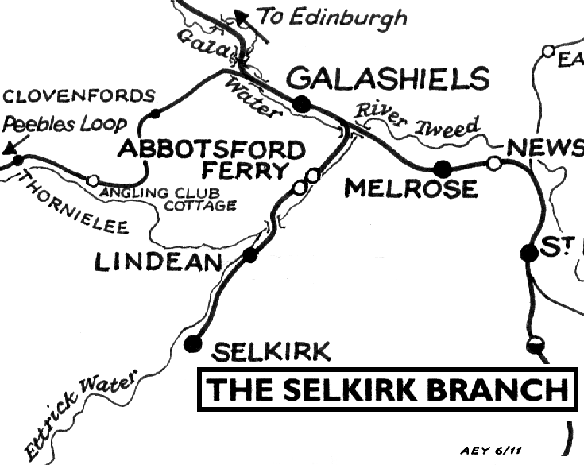 |
The Selkirk branch opened on 5 April 1856. Intermediate stations were at Lindean and Abbotsford Ferry. On the opening day there were seven trains between Galashiels and Selkirk and eight in the opposite direction. Once the line settled down to a regular service this was reduced to four in each direction with accommodation for first, second and fourth class passengers. There were also regular excursions from an early date; destinations included Kelso, Edinburgh, Glasgow and Dundee. During busy periods some branch trains were extended to Edinburgh, which required the use of a heavier locomotive. Special trains were also laid on for Galashiels v Selkirk rugby matches and for the Rugby Sevens at Jedburgh.
| Before the line opened there was a proposal from many of its shareholders that there should not be a Sunday service; this was rejected by the directors. However three months after the line opened, a meeting was held to discuss the Sunday trains. The vast majority of those present ‘resolved against the desecration of the Lord’s Day’. As a result the Sunday |
 |
trains were to be discontinued at the end of September. The NBR, however, opposed this decision and, despite the prediction that there would be ‘drunk and disorderly people inundating the town on Sunday’, this never happened, and the Sunday service continued to run.
The line was absorbed by the NBR on 1 July 1859, and in 1863 there was an improved service with six daily trains running in both directions between Galashiels and Selkirk and four on Sundays - reduced to two in 1868, and they remained at this number for many years. The frequency of the service gradually increased, reaching a peak in 1887 when there were thirteen daily trains. Into the 20th century, the service was in decline with eight weekday trains and ten on Saturdays in 1914. WW1 brought a reduction as an economy measure with five daily services (Monday - Saturday) and, in 1916, Sunday trains were withdrawn altogether. The frequency was increased after the war, and between 1919 and 1938 there were between seven and nine trains on weekdays with one or two extra services on Saturdays. The Sunday trains were never reinstated. In the inter-war years there were often long gaps between trains in the middle of the day, and some late night services did not stop at the intermediate stations.
.gif) |
In October 1922 the line - under the control of the LNER from the following January - was faced with competition from a new bus service between Selkirk and Galashiels, and within a few years bus services reached many of the villages within the catchment area of the Selkirk branch. The more convenient bus service quickly eroded passenger numbers on the branch. A new bus service between Selkirk and Hawick was particularly damaging to the railway’s traffic as it was now quicker to use the bus to reach the market town: half an hour by bus compared to one hour by train. Selkirk’s station had the disadvantage of an inconvenient site, with a very steep hill up to the town centre.
Closure of the branch was suggested as early as 1930, but nothing came of this apart from the closure of Abbotsford Ferry station from 5 January 1931. During the inter-war years the LNER ran Sunday half-day excursions, usually with a restaurant car, the most popular destinations being Newcastle, Whitley Bay, Kelso and Tweedmouth, plus occasionally Coldstream and Wooler. Many of these excursions started at Galashiels with passenger from Selkirk having to use the branch train to make the connection. There were also some military specials during training exercises, and special excursions organised by mill owners for their workforce.
 |
A Sentinel Cammell steam railcar started running on the branch service from 5 January 1931; this brought a cost saving as no guard was required. The Sentinal was used for all normal branch services apart from some special occasions which were usually on a Saturday. As the Sentinel often had to haul an additional trailer the timetable was altered to allow one |
extra minute between Lindean and Selkirk in both directions. The service was provided by the railcar Protector from February 1931 and by Nettle after December 1933. Nettle lasted until August 1945 when it was taken out of service and normal trains were reinstated.
Most of the goods traffic was connected with the textile industry, but the line also carried a large quantity of coal, general merchandise and stock for shops, with fruit coming from Edinburgh and the docks at Leith. Special trains were also run on alternate Mondays to take livestock to the market at St Boswells; similar trains ran on Tuesdays bound for the Gorgie market in Edinburgh. As well as traditional livestock, crates of rabbits were also a common sight on the branch. By 1924 goods traffic (with the exception of coal) was already in decline owing to the competition from road transport.
In 1925 Selkirk station sold 77,364 tickets but in 1949 there had been a dramatic reduction in passenger journeys with only 4,366 tickets being booked: an average of 14 per day. In view of this substantial decline, in early May 1951, the Scottish Region of British Railways proposed closure of the branch to passengers. Suitable alternative road transport was available and the Scottish Transport Users’ Consultative Committee raised no objections to the closure - which was hardly surprising as one of its members represented the competing SMT bus group! It was announced in August that year that the branch would close from 10 September 1951. As there was no Sunday service the last passenger train ran on 8 September. Some works outings continued to operate from Selkirk after closure until at least 1957; these included excursions to Aberdeen and Seaburn.
The station remained open for goods traffic, but in November 1958 BR once again looked at the economics of keeping the line open; however, the line survived. Total closure was proposed in July 1964, and goods services were withdrawn from 2 November that year although a private siding at Selkirk remained in use for a short time after that date. A short section of the branch remained open to serve the gas works at Galashiels but this, too, closed in October 1966, and the junction was lifted in 1967.
Selkirk station was demolished in December 1971, and a realignment of the A7 trunk road now uses the formation between Shawburn Toll and Boleside. Much of the rest of the branch is now a bridleway.
Tickets from Michael Stewart, map drawn by Alan Young.
Sources:
Additional bibliography:
To see other stations on the Selkirk branch click on the station name:
Galashiels, Abbotsford Ferry 1st site, Abbotsford Ferry 2nd site & Lindean |

old10.jpg)
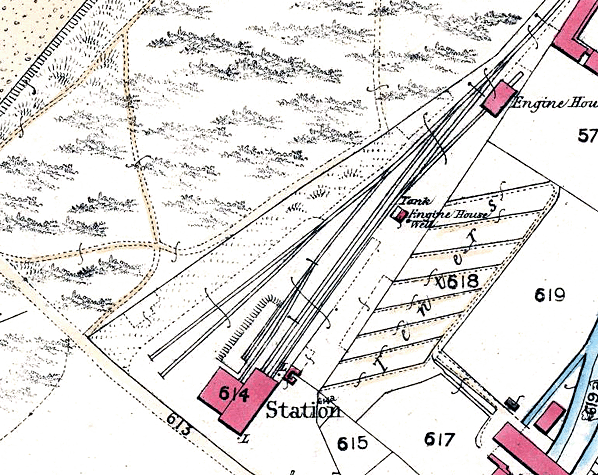
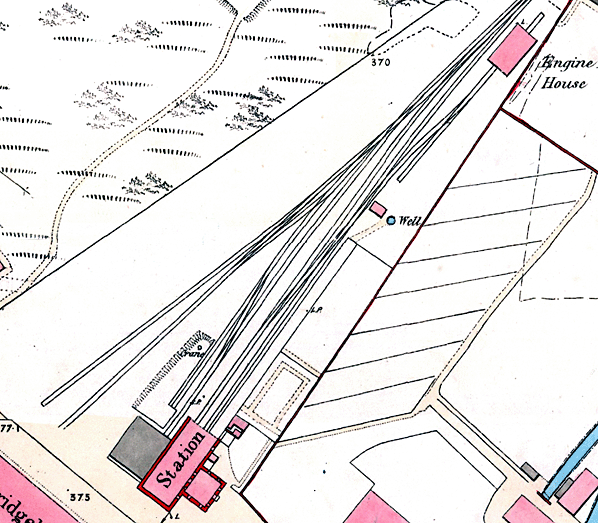
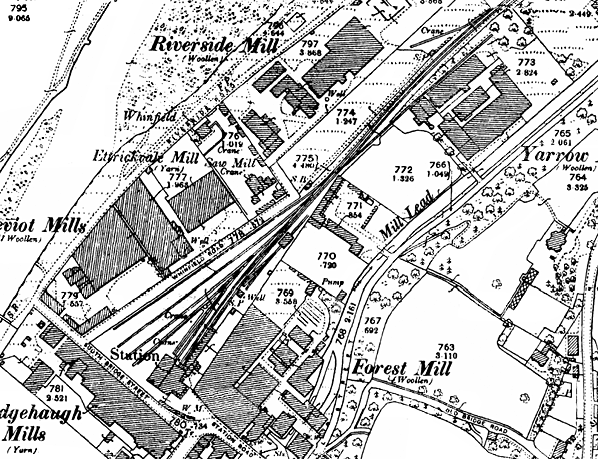
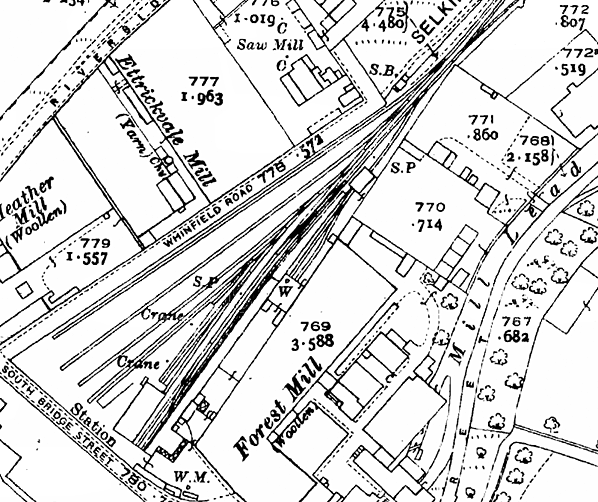
old4.jpg)
old1.jpg)
old7.jpg)
old9.jpg)
old5.jpg)
old10.jpg)
old6.jpg)
11.jpg)
2.jpg)
1.jpg)
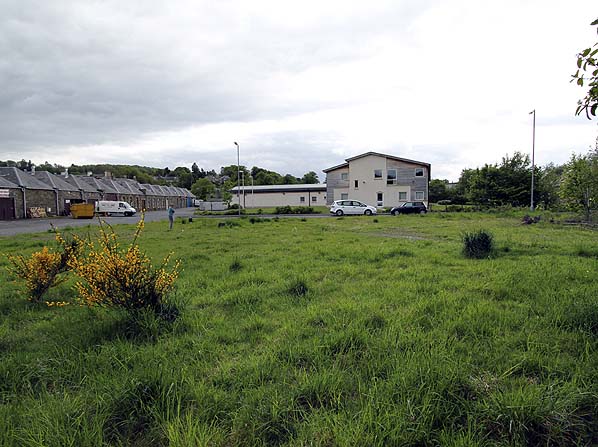




.gif)


 Home Page
Home Page